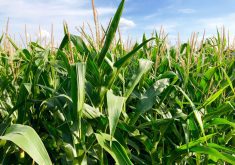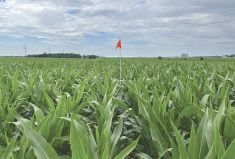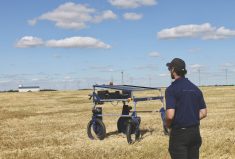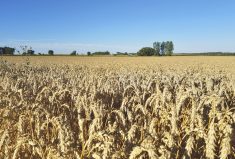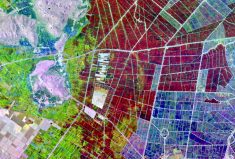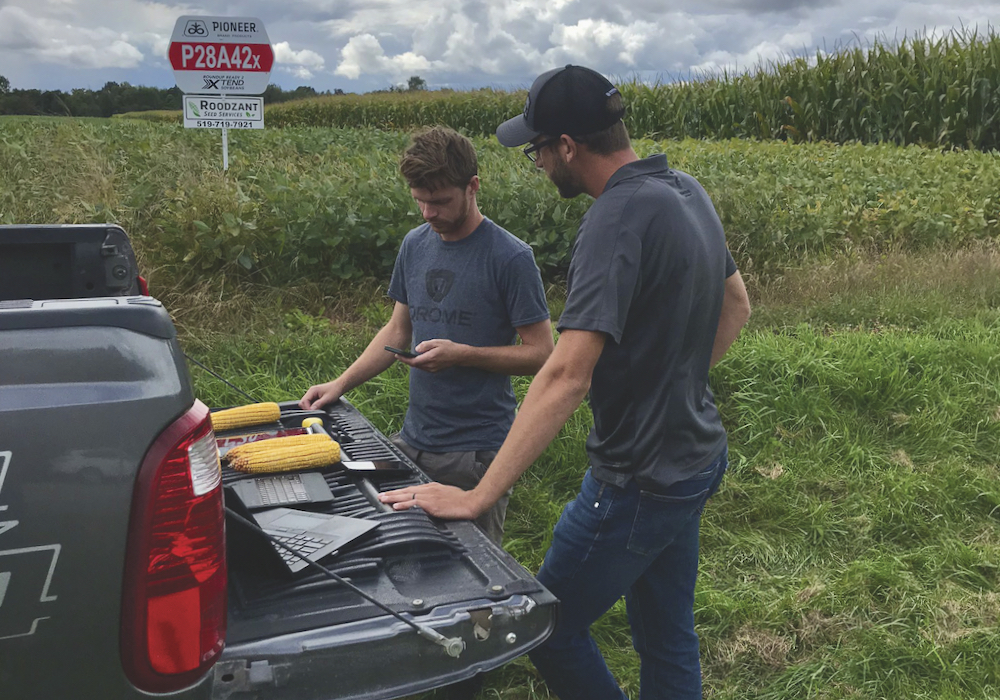You could say that most farmers are already sold on the benefits of precision agriculture — depending on how you define the term, and how many of the benefits are wants versus needs.
“Farmers do things along a spectrum,” says Marvin Talsma, product marketing manager for Climate FieldView, Bayer CropScience’s precision agriculture data platform. “There are needs and for a number of farmers in Canada, things like auto guidance and auto steer are needs for the majority. To go to a field, plant it, work it, spray it without auto guidance is a foreign concept.”
But beyond those established technologies, there’s a “better the devil you know than the one you don’t” attitude among many farmers. As more advanced — and expensive — systems become available, they’re questioning their value.
Read Also

Sensing the soil: Root cell research finds ‘stress hormone’
Research into how root cells react to soil stressors could help plants better adapt to changes in their climate.
Or the ability to take advantage of them. Talsma says he sees complaints on Twitter about loss of connectivity for GPS-based systems, not to mention the challenges for growers without reliable high-speed internet.
And for those who want to take more advantage of new technology, standing in their way is the amount of data they’ve been able to collect in the past five years, let alone the past 20. In a “needs versus wants” scenario, they may need the data to make better-informed decisions but might not want to sort through it to identify which problems they should be solving.
“There’s this immense pile of data that’s generated and it’s turning that into something meaningful and useful that’s the challenge,” says Talsma. “Farmers don’t want their data to be used against them. The information is there with the yield monitor, and the knowledge a farmer has, and they can use it for variable-rate prescriptions … but we need to turn that data into insights.”
The challenge is determining what Climate FieldView can do with that data, taking what’s known about disease and weather and creating a model, incorporating data from scouting and ground-truthing.
- Read more: Another digital option for farmers
Talmsa says the optimal times to be scouting fields can make for a difficult walk through lush soybean or canola stands, but perhaps it’s possible to use satellite or UAV imagery to complement the boots on the ground. Overall, that’s where Talsma believes a bottleneck of turning that useful data into insight and information can form.
Yet the responsibility for the decision doesn’t always fall to the farmer, but on the Climate FieldView team member making the recommendations. That’s the other challenge with the ownership of data.
“It’s learning and knowledge at that consultant and agronomy level to rely on it and learning how to trust it,” says Talsma. “We’re on an evolutionary path and each part of that knowledge-transfer chain is a matter of continuing to learn and evolve.”
Assessing ROI
Adaptability and affordability play a huge role in precision ag’s uptake but it also includes an important concern: return on investment. It’s the number one issue that Aaron Breimer fields with precision ag systems.
“Everybody keeps asking for more and more case studies, to the point where I’m saying, ‘You have to be able to leap a little bit to be willing to try this,’” says Breimer, vice-president, data insights with Deveron, a precision ag and agronomy service. “If a selective fungicide works in dry beans in Huron Country, it’s probably going to work in Oxford County.”

Still, it’s a tough mould to break, especially when growers have been encouraged for years to run test plots and strips in their fields. But Breimer asks if they really want to see more case studies, or do they need to understand the value proposition of the equipment or the technology, or the data specific to their operation?
“Part of the challenge is understanding why it’s paying in certain cases and not in others,” he says. “At some point, you have to be willing to try it on your operation, especially if you’ve invested in the technology. From my perspective, there’s less that’s on a list of wants and needs, and more around concept.”
Bremer says that determining what doesn’t work can pay off.
“In agriculture, we’re very interested in trying to figure out what works better. But we don’t spend any time in figuring out what doesn’t work, which seems counterintuitive. I’ve had lots of people say, ‘I don’t want to test that if it’s not going to work on my farm.’ Well, by testing and seeing if something doesn’t work, you may have a better understanding of what those limitations are. We have hundreds of solutions just waiting for a problem.”
Breimer says farmers are playing catch-up in an almost defensive mode about technologies being promoted to them. Without asking critical questions about what they are or aren’t seeing in their fields, there may be 10 to 20 new precision ag systems that have entered the market, with 10 or 20 that have faded from view.
He says agriculture is an incredibly intricate set of interactions, yet all of the research is set up on eliminating variables except for the one a grower or agronomist wants to test, or to minimize or ignore other variables. Changing the philosophy around how things interact may be a better option. It’s not necessarily a matter of assessing how a hybrid performs 67 per cent of the time against a competitor. It might be more insightful to ask why 67 per cent is good enough.
“We should be asking whether that hybrid does better when phosphorus is at a certain level, or whether it performs better when it’s planted very early,” says Breimer. “It’s a matter of understanding how management and soil fertility and weather and soil conditions impact some of this.”
He says yield maps are great, but what’s needed is answering the basic question “Why?” when it comes to determining the cause of a 30- to 40-bu./ac. yield hit in corn. If the precision ag system helps answer that question, the return on investment is obvious.
Pandemic paradigm
The chase for revenue increases, cost reductions and true value in precision ag has also been altered in the past two years, thanks to COVID-19. The pandemic has shifted the manner in which farmers engage with advisors, retailers, consultants and other farmers, and the way they’re doing business today compared to just two years ago. It may also be softening any resolve growers have towards not trusting technologies.
“It’s increased the virtual collaboration and digital sharing between farmers and their ag industry partners to ensure operations on the farm continue to be executed as seamlessly as possible,” says Climate FieldView’s Talsma. “During winter months, more virtual versus in-person planning meetings were occurring as farmers and their trusted advisors discussed cropping plans and what support was required for a successful spring.”
Engagement in digital farming increased as well, as more growers signed up for remote monitoring capabilities for field health, and sharing planting and nutrient management data between their operations and third parties.
A recent survey conducted by Bayer CropScience indicated that 50 per cent of farm operations in Western Canada did not use any form of digital farm management software.
“But that number’s decreasing as virtual collaboration is made easier and farm operations look to manage risk and increase their bottom lines,” says Talsma.




